LED BY DR. FERYAL SALEM
JuNE 27-JULY 6, 2022
Take the road less traveled by exploring an enchanting part of Turkey often missed by international tourists. Learn about the many civilizations from, the ancient Greeks, Byzantines, Arameans, Sassanians, Artuqids, Seljuks, and Ottomans whose cultures coalesced to give Eastern Anatolia its unique identity. Cross the Tigris and Euphrates Rivers that have been a cradle for human civilization for thousands of years. Experience the religious diversity of this region and the peaceful coexistence of its ancient churches and mosques throughout the centuries.
We would love to have you with us on this once in a life time experience and help you to register. Please send an email to
fsalem@silkroadmusings.com
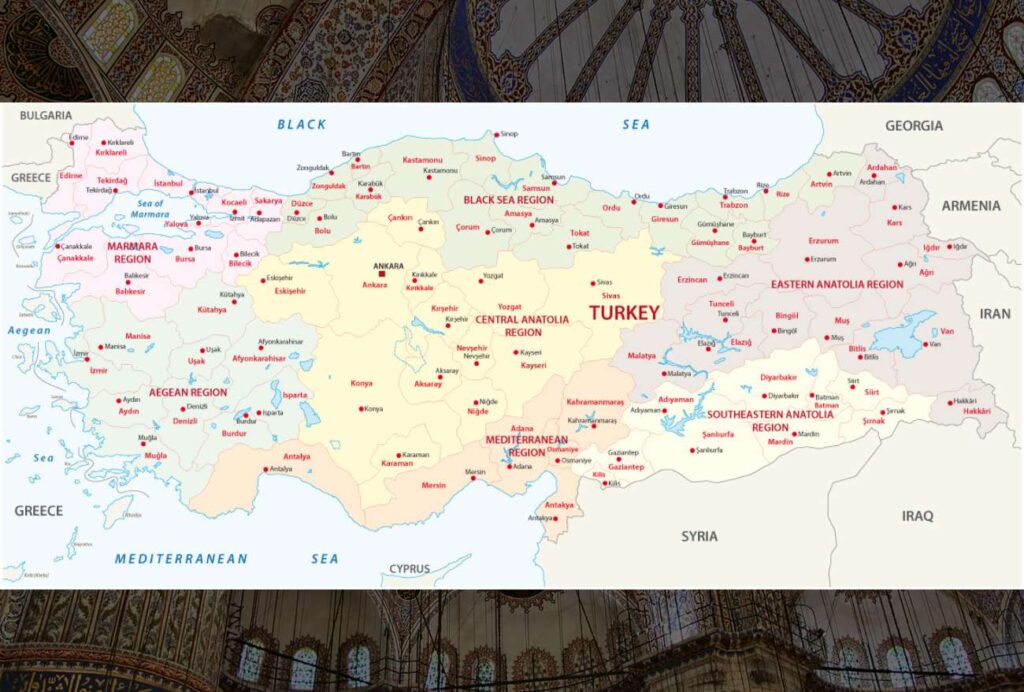
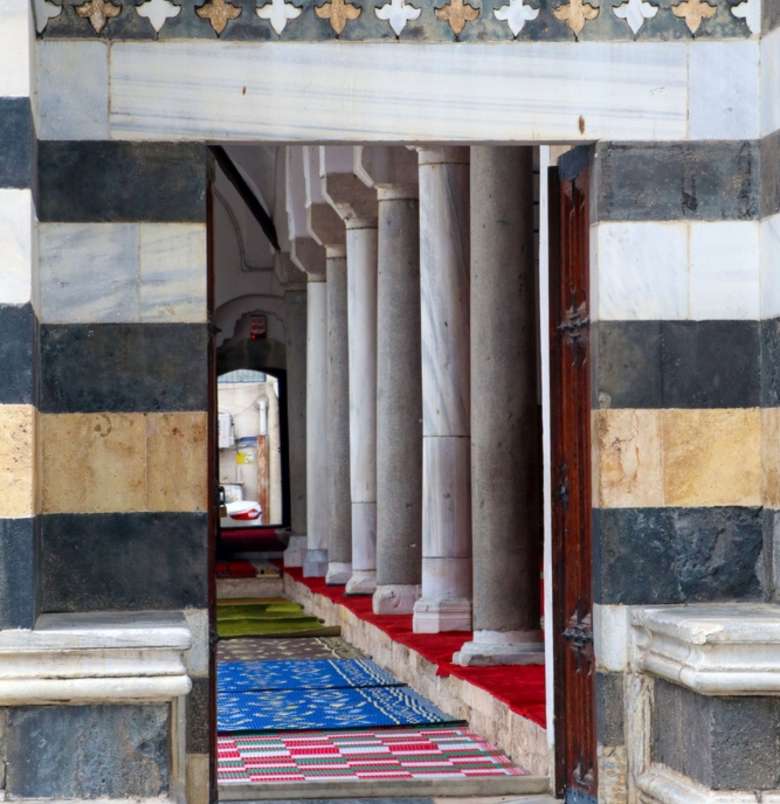
Day 1 June 27
ISTANBUL – ANTAKYA
We will meet at the Istanbul Airport for an early morning local flight to Antakya. Upon arrival in Antakya, we will be met by our vehicle which will take us to the city center where our tour will begin. Antakya (Antioch) is a city known for the peaceful coexistence of church bells and Muslim calls to prayer from its many minarets that hallmark the diverse identity of this ancient city. Our first visit in Antakya will be to the Hatay Archeology Museum where we examine mosaics and coin collections dating to ancient civilizations such as the Hitites, the Greeks, the Romans, and the Byzantines. After completing our tour of this museum, we will proceed to one of the most important churches of early Christianity, St. Pierre Church, where the earliest Christian communities of Antakya worshipped. We will learn about the history of Christian communities in this region and their roots dating back almost two thousands years.
After this visit we will head towards the famous Antakya restaurant, Pöç Kasabı, to try this regions famous kibbe/kebab spiced with sumac and cumin while cooked in a tray (tepsi kebap).
We will then visit one of Anatolia’s oldest mosques, Habib al-Najjar Mosque. We will also visit the resting places of Şemun Sefa Hazretleri as well as Yahya and Yunus Hazretleri while deepening our understanding of how the different Muslim and Christian faith communities made Antakya their home.
We will then tour the ancient Herod Road in which numerous Chrisitian churches and communities live. We will see the Orthodox and Catholic churches, a historic Synagogue, curving old Antakya streets and its traditional homes. We will stop at the historic Affan coffeehouse to drink Antakyan coffee. Later we will stop at Yusuf Usta’s bakery in Çınaraltı to taste Antakya’s famous kunafa dessert from its best sweet makers.
Activities:
- Sabancı Mosque
- Hasan Dede, Sofu Dede and Erkaç Dede
- Hatay Archeology Museum
- St. Pierre Church
- Habib al-Najjar Mosque
- Şemun Sefa Hazretleri as well as Yahya and Yunus Hazretleri
- Herod Road
Day 2 June 28
ANTAKYA
After breakfast, we will depart towards Samandağ to visit the Vespasianus Titus Tunnel, which is an ancient water tunnel built by the Romans in the first century A.D. Located within a spectacular natural landscape, this tunnel has continued to mesmerize its visitors for thousands of years. The Roman Emperor, Vespasianus, ordered the construction of this tunnel to block the flooding rain waters that used to come down from the mountains. It was built with the sweat and tears of thousands of slaves over several decades. We will then see the rock gravestones believed to belong to the Romans in Beşikli Cave which is located close to the tunnel.
Immediately afterwards, we will visit Vakıflı which is one of the few remaining Armenian villages in Anatolia. While exploring this village, we will stop by the local coffeehouse to enjoy a drink of tea or coffee. We will then proceed to the co-ops of locally owned businesses to purchase some of the famous natural products of this town. We will spend the night in Antakya.
Activities:
- Vespasianus Titus Tunnel
- Samandağ
- Beşikli Cave
- Vakıflı Armenian Village
Day 3 June 29
ANTAKYA – GAZİANTEP
We depart Antakya in the morning and arrive in Gaziantep after 3 hours. We begin our tour of this city by visiting the Zeugma Mosaic Museum. The Zeugma Museum is one of the best modern museums in Turkey. This museum takes its visitors through the ancient city of Zeugma by its unique display of archeological materials positioned strategically to convey a sense of time and space. Mosaics that were discovered while digging to save the Birecik Dam such as the world-famous Oceanus and Tethys, Poseidon, and Achiles Mosaics will be viewed. This will also be a rare opportunity to view the well-known gypsy-girl mosaic.
After our visit to the museum, we will head to the popular Kebapçı Halil Usta restaurant where we will savor some of the famous kebabs and dishes of this city’s cuisine. After lunch, we will visit the Medusa Archeological Museum of Glass Works. Afterwards, we will visit the Emine Göğüş Culinary Museum to learn about Gaziantep’s rich cuisine.
We will then explore the old city neighborhood known as, Bey Mahallesi, to get a sense of traditional life in Gaziantep. Free time will be provided to stroll through Gaziantep’s traditional spice market. Those who wish can enjoy a coffee break at the Kahveci Tahmis coffee house. Others may wish to get lost in the brass ware, dried fruits, or souvenir sections of the covered bazaar. After rejoining the group at a set time at the coffee house, we will go to our hotel and spend the night in Gaziantep.
Activities:
- Zeugma Mosaic Museum
- Kebapçı Halil Usta Restaurant
- Medusa Archeological Museum of Glass Works
- Emine Göğüş Culinary Museum
- Bey Mahallesi Old District
- Kahveci Tahmis Coffee House (Optional)
- Gaziantep Covered Spice Bazaar
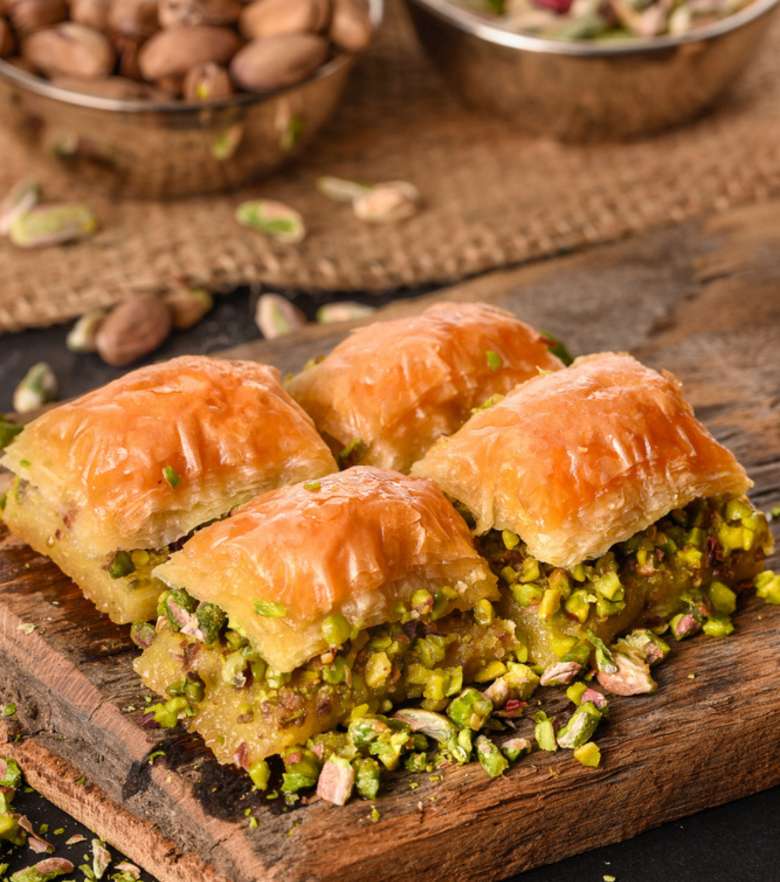
Day 4 June 30
GAZİANTEP – HALFETİ – ŞANLIURFA
After breakfast, we will head towards Halfeti which is famous for its black roses. After two hours we will arrive at Halfeti which has been covered in water after the Birecik Dam broke. We will get on a boat and take a relaxing boat trip along the green waters of the Euphrates River. During our boat tour of the lost city of Halfeti, we will be able to take pictures of the Roman Fort (Rumkale) and its inscriptions.
After we complete our boat ride, we will continue on the road to Şanlıurfa. Before arriving at this destination, we will pass through Birecik and stop by the center that houses this areas famous Bald Ibis (Kelaynak) birds. We will visit the Museum here and learn about these unique creatures.
Activities:
- Halfeti
- Euphrates River Boat Ride
- Roman Fort
- Bald Ibis Museum
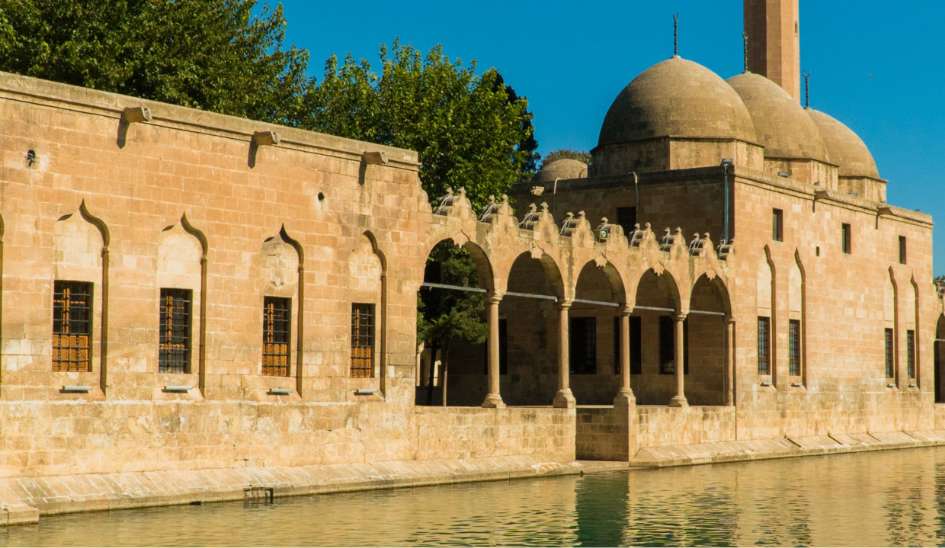
Day 5 July 1
ŞANLIURFA
We will listen to the story of the Prophet Ibrahim who is believed to have been raised in this city while we visit the Rizvaniye Mosque. We will see the Qur’anic inscription on the Khalil al-Rahman Mosque dedicated to the Prophet Ibrahim which cites the verse, “O Fire, Be cool and peaceful towards Ibrahim.” The the pool of water containing large fish in front of the mosque is said to have been the spot that Ibrahim was thrown into the fire by his father. After our visit to the Khalil al-Rahman Mosque and its pool, we will proceed to the Mawlid al-Khalil Cave where it believed that the Prophet Ibrahim was born.
After this, we will take a well-deserved Turkish coffee or tea break at one of the traditional cafes with a view of this ancient city.
We will have lunch at a traditional restaurant that specializes in the authentic cuisine of this rich city. After lunch we will continue our tour of the culture and history of Urfa by visiting the Urfa City Museum. We will go to Urfa’s historic neighborhoods and walk through the Eyyubiye neighborhood known for its old homes and traditional structures. At the end of our walk we will pass through the Sipahi bazaar where we will admire the multi-color traditional fabrics of this city. Finally, we will take a rest while sipping pistachio coffee under the hundreds of years old trees that cover the famous inn/caravansaray at the heart of the old city known as Gümrük Hanı. It was built by Behram Paşa under the reign of Sultan Sulayman the magnificent and is one of the hallmarks of Urfa. Free time will be provided at this time for souvenir shopping.
Activities:
- Khalil al-Rahman Mosque and Pool
- Mawlid al-Khalil Cave
- Urfa City Museum
- Eyyubiye Old District
- Sipahi Bazaar
- Gümrük Hanı
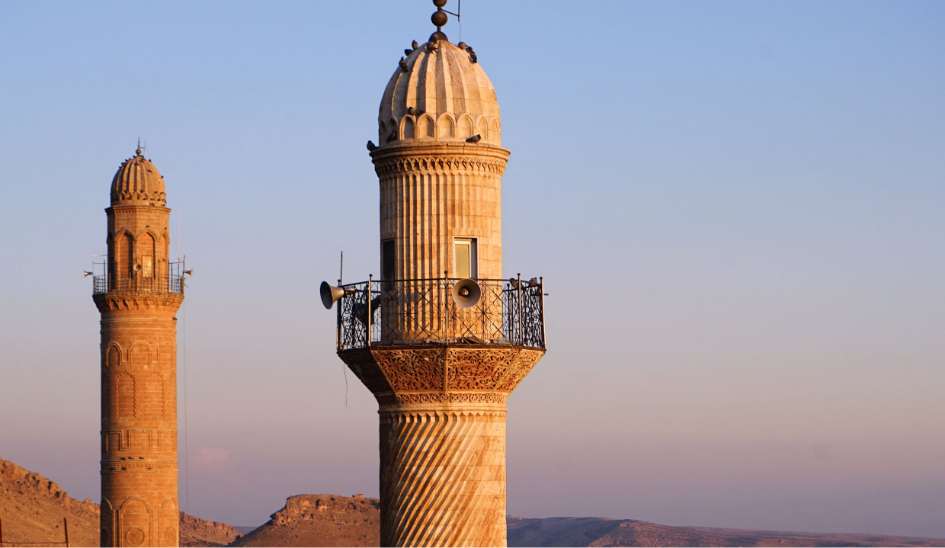
Day 6 July 2
ŞANLIURFA – GÖBEKLİTEPE – MARDİN
Following breakfast, we will visit the Şanlıurfa Museum of Archeology. We will examine artifacts unearthed during the reconstruction of the Atatürk and Birecik Dams, population expansion, and the discovery of the Göbeklitepe site.
Afterwards, our next stop will be the Aleppo Garden Museum of Mosaics (Halepli Bahçe Mozaik Müzesi). Here we will see famous mosaics dedicated to the mythic Amazon women warriors who are believed to have originated from this region as well mosaics depicting the Ancient Greek warrior, Achilles. We will end our museum visit by viewing one of the rarest mosaic artifacts, the Orpheus. This mosaic was returned to its land of origin in Anatolia after it was stolen for many years. This particular piece depicts Orpheus playing the lyre while surrounded by wild animals.
After lunch, we will depart from Şanlıurfa and arrive at Göbeklitepe in half an hour. Göbeklitepe is one of the oldest surviving World monuments dating to 9500-8000 BCE. It was only recently discovered and placed on the UNESCO list of World Heritage Sites. During this visit we will go back 10,000 years and examine one of humanity’s earliest sites of civilization whose discovery forced a reassessment of previous assumptions of the historical timeline of the development of ancient civilizations, such as those of the Sumerians and Hitites. After we have had the opportunity to take pictures at this site, we will head to Mardin. After two and a half hours, we will arrive in Mardin and spend the night there.
Activities:
- Şanlıurfa Museum of Archeology
- Aleppo Garden Museum of Mosaics
- Amazon, Achilles, and Orpheus Mosaics
- Göbeklitepe
Day 7 July 3
MARDİN
After breakfast, we will begin our day by visiting the stunning Shahidiyya Madrasa and Mosque Complex built by the Artuqid Turkman ruler Nasr al-Din Aslan Han. We will then visit the Sakıp Sabancı Museum that depicts the social life and culture of this old city.
From the museum, we will proceed to visit Mardin’s most important Assyrian Orthodox Church known as the Forty Martyrs Church (Kırklar Kilisesi). After visiting this church, we will visit the Latifiye Mosque and later wander through Mardin’s traditional spice bazaar. We will take pictures of the traditional stone homes of Mardin that were carved by the world-famous Assyrian masonry methods of this city. After this, we will visit Ulu Camii and learn about this important landmark of the Artuqid Turkman period.
After passing through the jewelry market, we will view the Girl’s Professional School that is housed in part on a structure that was originally built by the 13th Century Artuqid ruler Melik Mahmut Karaaslan. The masonry and building structure remain a landmark of Mardin despite the use of this plot of land having taken many different forms throughout the centuries. After this we will visit the Zinciriye Madrasa which is a seminary built in 1385 by the last Artuqid ruler, Malik Najm al-Din Isa. It is one the most beautiful structures of Mardin and is also a major landmark of Eastern Anatolia. From this madrasa, we will have a view of this enchanting timeless city that is reminiscent of ancient Mesopotamian civilization.
Following our lunch at the Mardin city center, everyone will have free time to wander and shop for souvenirs. You might like to take home some of Mardin’s natural soaps or try the blue Mardin candy (Mardin şekeri). You can also use this time to relax at a local coffee shop while gazing upon views of this city that has been a crossroads of civilizations for thousands of years. We will end our day tour by visiting the Monastery of Saint Ananias (Dayr al-Zafaran) which is an important Syriac Orthodox Monastery with a long history in this city. We will spend tonight in Mardin.
Activities:
- Shahidiyya Madrasa and Mosque
- Sakıp Sabancı Museum
- Forty Martyrs Church (Kırklar Kilisesi)
- Latifiye Mosque
- Ulu Camii
- Girl’s Professional School
- Zinciriye Madrasa
- Monastery of Saint Ananias (Dayr al-Zafaran)
Day 8 July 4
MARDİN – MİDYAT – HASANKEYF –DİYARBAKIR
After breakfast we will head towards Midyat and stop at Mağara Yazidi Village on the way. Mağara village is known to be a village community following the Yazidi faith. Here we will learn about Yazidi beliefs and culture. If we have the opportunity, we will visit their place of worship to better understand Yazidi belief and practice.
Our next stop on the road will be to visit Dayro d-Mor Gabriel (Deyrulumur Manastırı) which is the oldest Syriac Orthodox Monastery in the world. Here we will learn about Syriac Orthodox beliefs as well as experience the monastery up close by visiting the main church complex, Theodora Dome, and the residences of the monks.
We will then enjoy a delicious lunch of traditional cuisines on our arrival in Midyat. Afterwards, we will take a walking tour of Midyat. We will see the Mor Barsaumo Church, Midyat Guesthouse (Midyat Konuk Evi), and the Midyat Market. We will have an opportunity to take pictures of Midyat’s best masonry work.
When our tour of Midyat is completed, we will go to Hasankeyf. Hasankeyf is another ancient town once located on the banks of the great River Tigris. The city has recently been submerged in water as a result of the Ilisu Dam Project.
We will then visit the Zayn al-Abidin Mosque Complex which includes a gravesite where the Prophet Muhammad’s 13th generation grandchildren, Zayn al-Abidin and Sitti Zaynab, are buried. This complex has the remnants of Ayyubid/Zangid, Artuqid, and Ottoman architectural styles as it was renovated by each of these ruling powers. After we finish our visit to this region that borders the northern Syrian border, we will head North for two hours until we arrive at Diyarbakir. We will spend the night in Diyarbakir.
Activities:
- Midyat
- Mağara Yazidi Village
- Yazidi Temple (Depending on Availability)
- Dayro d-Mor Gabriel (Deyrulumur Manastırı)
- Mor Barsaumo Church
- Midyat Guesthouse (Midyat Konuk Evi)
- Midyat Market
- Hasankeyf
- Zayn al-Abidin Mosque Complex

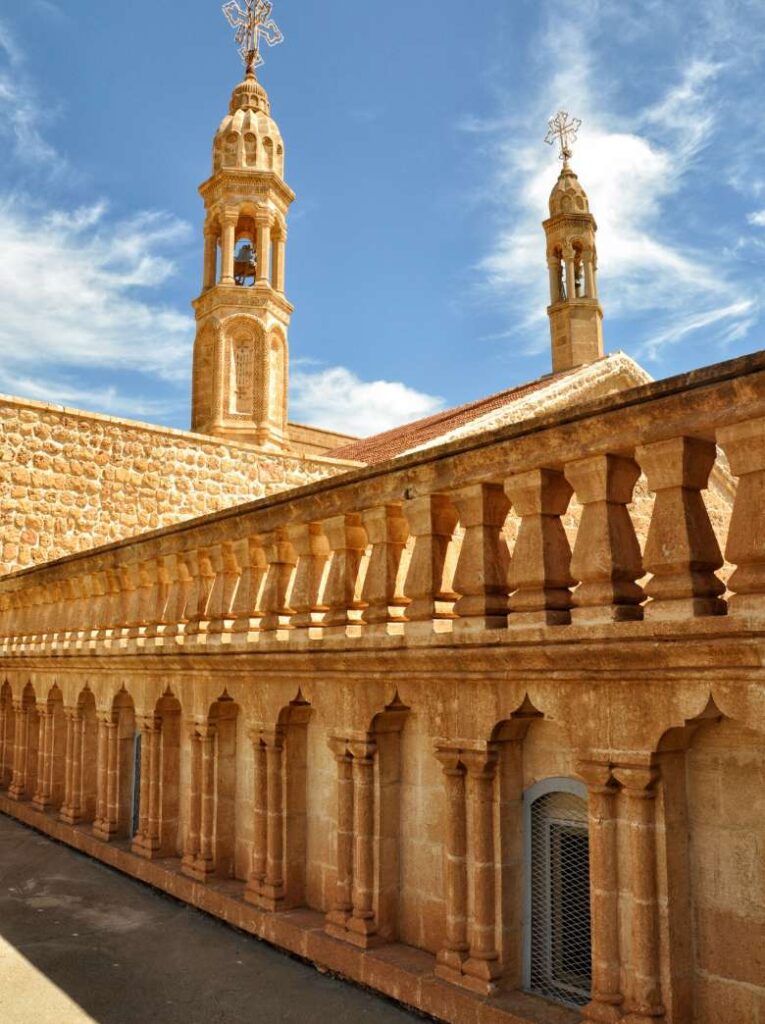
Day 9 July 5
DİYARBAKIR
After breakfast, we will walk along the Tigris River and see the iconic Tigris Bridge with ten arches and hence also known as the ten eyed bridge (On Gözlü Köprü). We will then go to the Hevsel Gardens which are a 700-acre fertile region on the Tigris whose presence dating back thousands of years, has made it into a UNESCO World Heritage Site. The Hevsel Gardens are mentioned in Aramean chronicles that date back as early as the ninth century BCE. These gardens have seen ancient Greek and Roman rule, as well as the Sassanians, Abbasids, Seljuks, Artuqids, and Ottomans. Following this walking tour, we will head towards the Diyarbakir Fort where we will see the famous Mardin Gate and Goat Tower (Keçi Burcu). After this visit, we will have lunch at a traditional restaurant to delight in Diyarbakir’s rich cuisine.
We will then dedicate the afternoon to exploring the İçkale Museum Complex that includes buildings that house some of the most precious artifacts and structures of this part of Mesopotamia. Here we will visit the Diyarbakir Museum of Archeology, the Artuqid Palace that was later used as a prison, St. Giragos Armenian Church (Aya Yorgi Church), the Lion Fountain (Aslanlı Çeşme), and the Atatürk Museum. We will also see the ancient settlement of Amida Höyük that was first settled by the Arameans around the 3rd Century B.C. This ancient Mesopotamian city located within the Fortress of the İçkale Museum Complex was later ruled by the Assyrians, Sassanians, Umayyads, Abbasids, Seljuqs, and Ottomans.
We will also have time to visit what is considered one of the holiest sites of this region, the Sulayman Mosque and the Graves of 27 Sahaba (Süleyman Camii ve 27 Sahabe Türbesi). This mosque is named after the son of Khalid b. Al-Walid, Sulayman b. Khalid who led the expedition sent out by the second caliph, Umar b. Al-Khattab. The names of 27 Companions of the Prophet Muhammad who died in the campaign to expand Muslim presence in Diyarbakir are listed at the gate of the Mosque and they are buried in the cemetery adjacent to it. The presence of these graves of Sahaba in Diyarbakir and its vicinity has made this city of high religious significance for Muslims.
After this we will visit the one of the oldest mosques of Anatolia, Ulu Camii. When writing about his travels in the region, Evliya Çelebi wrote of this mosque saying that “it will remain a sacred place of worship regardless of who rules rules this city.” We will also visit the Artuqid Mesudiye Madrasa and then the Cahit Sıtkı Tarancı Museum House. We will have dinner at our hotel in Diyarbakir.
Activities:
- Tigris Bridge
- Hevsel Gardens
- Mardin Gate
- Goat Tower (Keçi Burcu)
- İçkale Museum Complex
- St. Giragos Armenian Church (Aya Yorgi Church)
- Lion Fountain (Aslanlı Çeşme)
- Amida Höyük
- Sulayman Mosque and the Graves of 27 Sahaba
- Mesudiye Madrasa
- Cahit Sıtkı Tarancı Museum House
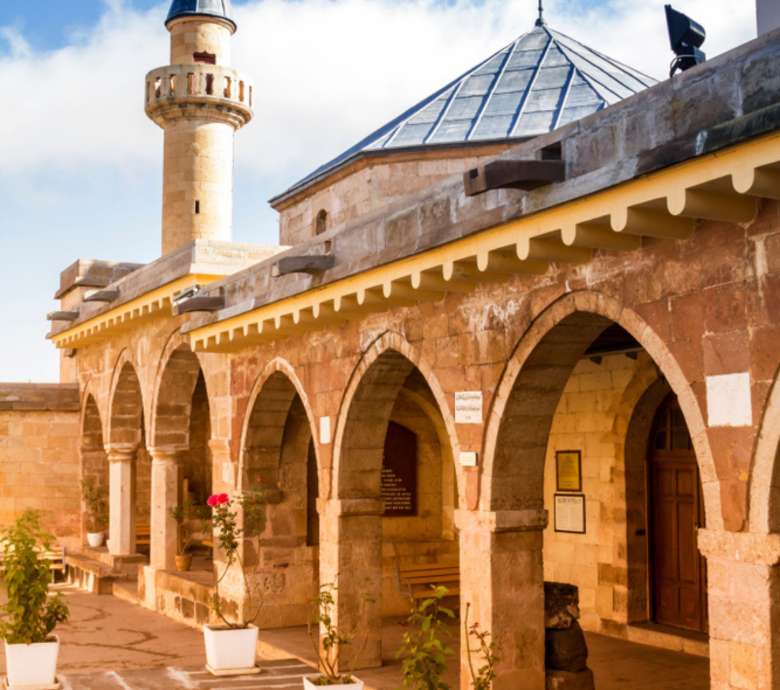
Day 10 July 6
DİYARBAKIR – ISTANBUL
After breakfast, we will depart for the Diyarbakir Airport to board our flights back to Istanbul. Our Turkish Airlines local flight departs at 11:25 am and arrives in Istanbul at 1:30 pm.
INCLUSIONS:
- Turkish Airlines Flights from Istanbul to Antakya and from Diyarbakir to Istanbul
- Local Guides
- Accommodations at hotels with breakfast and dinner included at hotel
- Ground Transportation
- Museum and included activity entry fees
- Air conditioning in all ground transportation
- Toll fees on the Road
- Tour Notes
NOT INCLUDED:
- Items of personal nature including extra luggage charges, room service, medical expenses etc.
- Beverages during meals
- Travel Insurance (Required for this trip)
- Tips
- Visas to Turkey and Covid Tests
